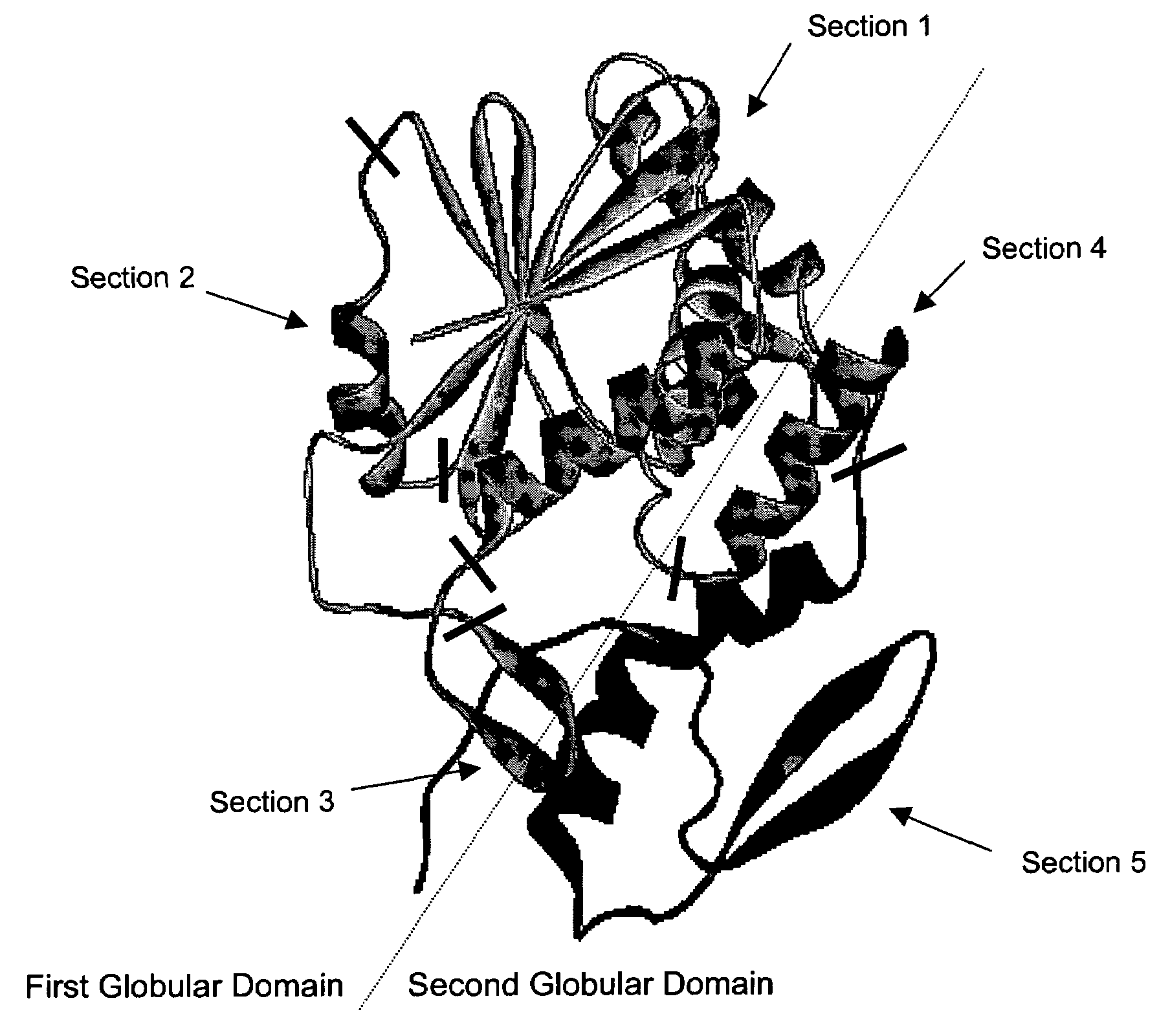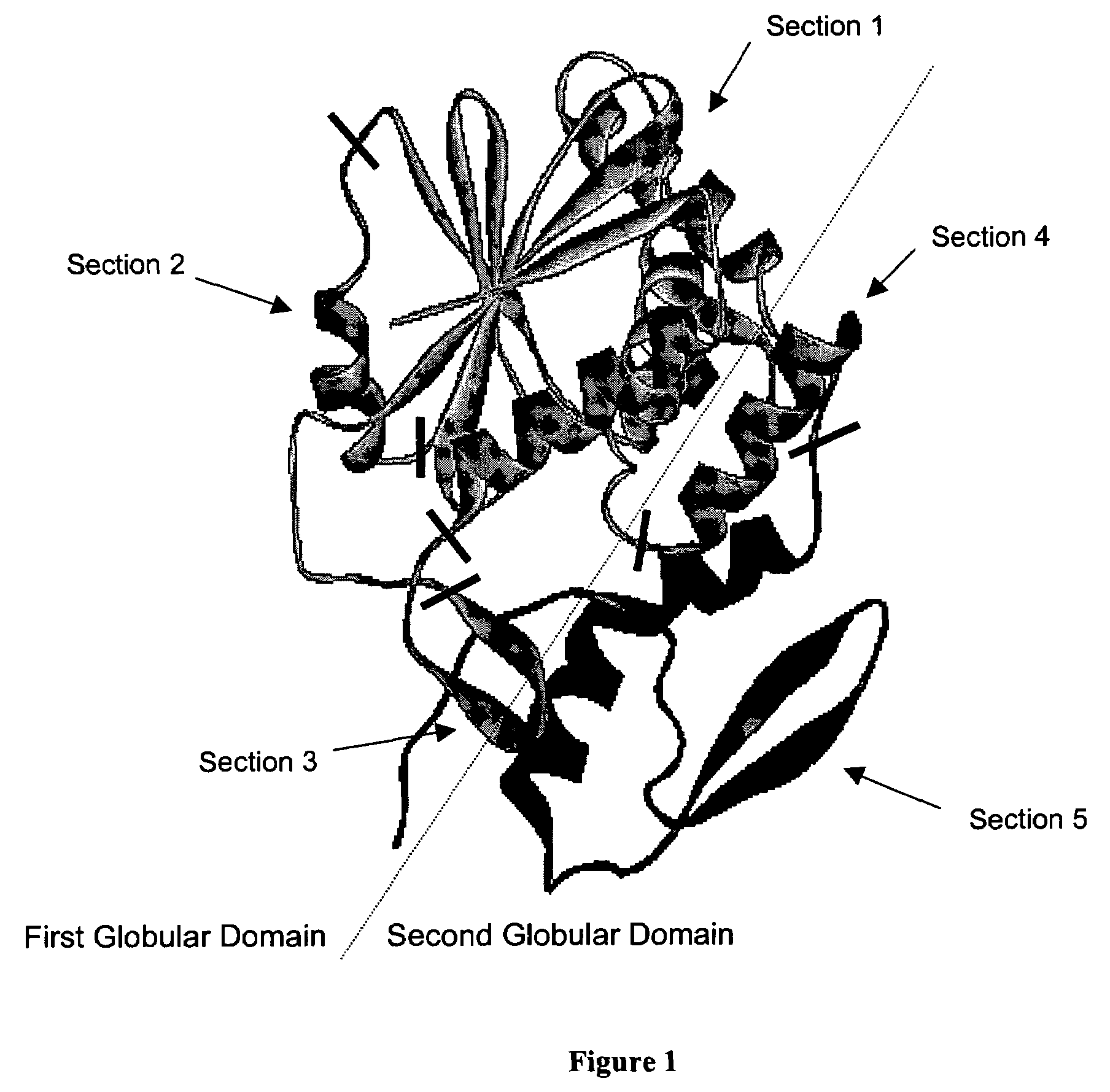Ricin toxin A-chain fragment for use as a vaccine
a technology of ricin and chain fragments, applied in the field of ricin toxin, can solve the problems of ricin being a very toxic protein, ricin will inevitably die, cell cannot make protein, etc., and achieve the effect of treating or preventing ricin intoxication
- Summary
- Abstract
- Description
- Claims
- Application Information
AI Technical Summary
Benefits of technology
Problems solved by technology
Method used
Image
Examples
example 1
Construction and Analysis of RTA198
A. DNA Cloning, Sequencing, and Expression of RTA198
[0083]DNA cloning and sequencing was conducted using conventional methods in the art. See Sambrook, et al. (2000) supra, which is herein incorporated by reference. Cloning was based upon the published polypeptide sequence of RTA (SEQ ID NO:1, SwissProt accession number P07829). See Lamb, et al. (1985) Eur. J. Biochem. 148(2):265-270; and Roberts, et al. (1992) supra, which are herein incorporated by reference.
[0084]To make the polynucleotide that encodes RTA198, a “stop codon” was incorporated after the codon for serine 198 in wt RTA. Mutagenesis to introduce the stop codon was done using a QuickChange kit commercially available from Stratagene (La Jolla, Calif.) based upon the polymerase chain reaction method. Briefly, a BamH 1 endonuclease cleavage site was replaced with a site for Nde I at the 5′ end of the RTA gene using the following primer: 5′ GAA TTC CAT ATG ATC TTC CCA AAG C 3′ (SEQ ID NO...
example 2
Construction and Analysis of RTA1-33 / 44-198
[0110]Calculations of solvation free energies indicated that the protein RTA198 is likely to be more stable in solvent water than the native RTA fold. It was noticed, however, that water was likely to fill several protein cavities not initially exposed to solvent in the native fold. Thus, a structural element of concern was the loop region comprising the amino acid residues from about position 33 to about 44. The loop region comprises a β-hairpin and several charged residues and the overall structure has a hydrophobic character. Thus, it was hypothesized that this loop region may be deleted to give a RTA comprising amino acid residues 1-33 and 44-198 (RTA1-33 / 44-198) that will retain the compactness and activity of RTA198.
A. DNA Cloning, Sequencing, and Expression of RTA1-33 / 44-198
[0111]DNA cloning, sequencing, and expression similar to that disclosed in Example 1 were used. Briefly, mutagenesis was done using the QuickChange kit commercial...
example 3
Protein Aggregation
[0134]To compare the relative amounts of protein aggregation in solutions of the novel RTA polypeptides versus dgRTA or recombinant RTA the following experiment may be conducted. The amounts and types of aggregates formed by the vaccine candidates may be quantified as a function of protein concentration and time under various conditions of fixed buffer composition, ionic strength, and pH. A combination of analytical size-exclusion chromatography (SEC) may be used with on-line multi-angle light scattering (MALS) detection. The SEC-MALS provides a measure of the molar mass of proteins in solution because the light scattering response is directly proportional to the weight-averaged molar mass (Mw) of the protein sample multiplied by the sample concentration.
[0135]Briefly, solutions of protein samples at a concentration of about 0.4 to about 1.5 mg / ml in 0.067 M Na / K phosphate, pH 7.5 are separated using standard high performance liquid chromatographic methodology wit...
PUM
| Property | Measurement | Unit |
|---|---|---|
| weight | aaaaa | aaaaa |
| pH | aaaaa | aaaaa |
| pH | aaaaa | aaaaa |
Abstract
Description
Claims
Application Information
 Login to View More
Login to View More - R&D
- Intellectual Property
- Life Sciences
- Materials
- Tech Scout
- Unparalleled Data Quality
- Higher Quality Content
- 60% Fewer Hallucinations
Browse by: Latest US Patents, China's latest patents, Technical Efficacy Thesaurus, Application Domain, Technology Topic, Popular Technical Reports.
© 2025 PatSnap. All rights reserved.Legal|Privacy policy|Modern Slavery Act Transparency Statement|Sitemap|About US| Contact US: help@patsnap.com



